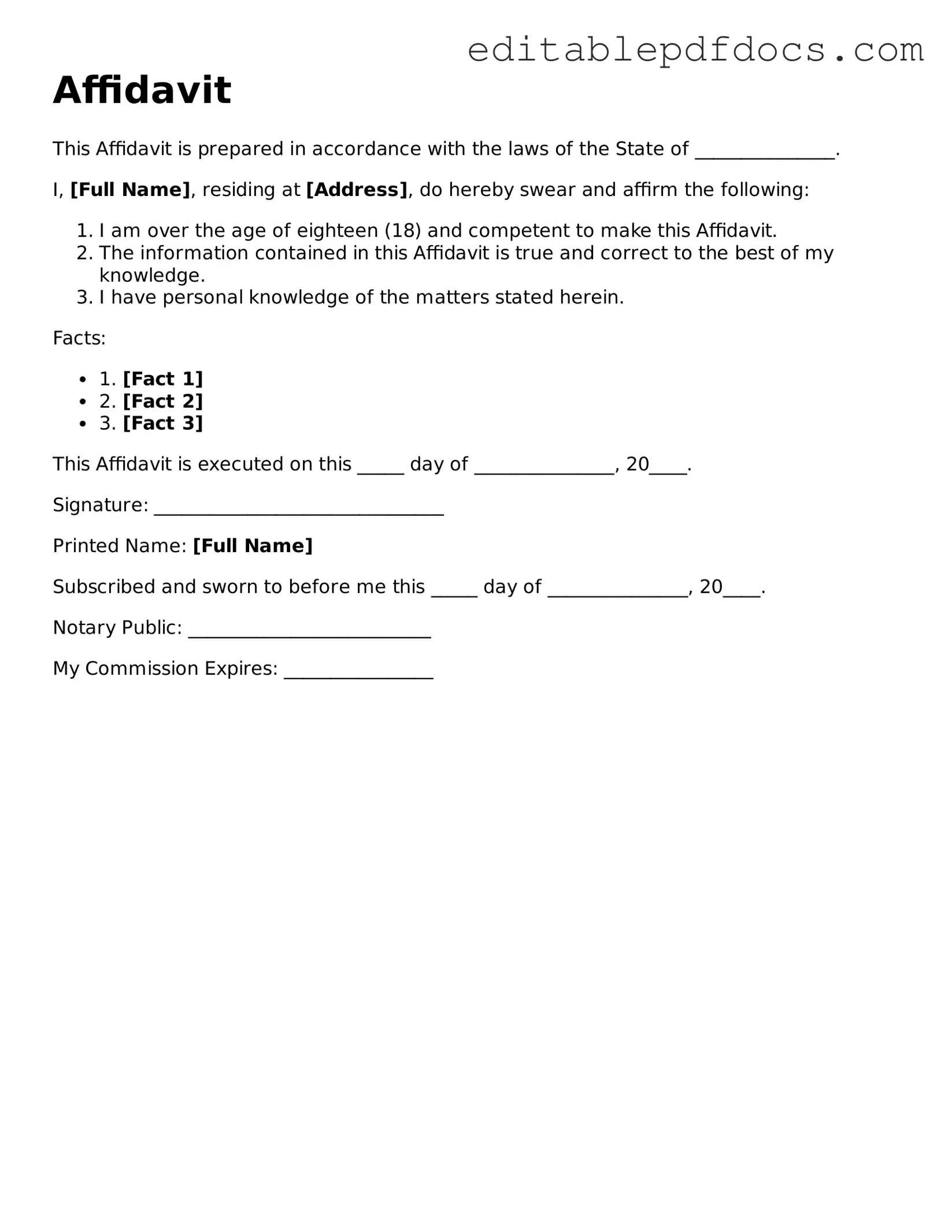Filling out an Affidavit form can seem straightforward, but many people make common mistakes that can lead to delays or complications. One frequent error is not providing complete information. Each section of the form requires specific details, and leaving any part blank can raise questions or lead to rejection. It's essential to ensure that every required field is filled out thoroughly.
Another mistake is failing to use clear and legible handwriting. If the form is handwritten, any illegible text can result in misunderstandings or misinterpretations. Using a pen with dark ink and writing clearly can help avoid this issue. Alternatively, typing the form can eliminate legibility concerns altogether.
Many individuals also overlook the importance of signing the Affidavit. A signature is a crucial element that validates the document. Forgetting to sign or not using the correct signature can render the Affidavit invalid. Always double-check that the signature is present and matches the name printed on the form.
In addition, people often forget to date the Affidavit. Including the date is vital as it indicates when the statement was made. This can be especially important for legal matters where timing is essential. A missing date can cause confusion about the timeline of events.
Another common mistake involves not having the Affidavit notarized when required. Certain situations mandate that an Affidavit be notarized to ensure its authenticity. Failing to have a notary public witness the signing can lead to the document being deemed insufficient.
Some individuals neglect to provide supporting documentation. An Affidavit may require additional evidence to back up the statements made. Including these documents can strengthen the case and provide clarity, so it’s wise to review the requirements carefully.
Using vague language is another pitfall. Affidavits should be clear and specific. Ambiguous statements can lead to confusion or misinterpretation. Using precise language helps convey the intended message effectively.
Many people also forget to review the completed Affidavit for errors before submission. Simple typos or incorrect information can undermine the credibility of the document. Taking a moment to proofread can prevent these easily avoidable mistakes.
Additionally, individuals sometimes fail to check the specific requirements for their jurisdiction. Different states or counties may have unique rules regarding Affidavits. Being aware of these local guidelines can prevent unnecessary complications.
Lastly, not keeping a copy of the completed Affidavit is a common oversight. Retaining a copy for personal records is important, especially if any questions arise later. Having a reference can be invaluable for future needs or clarifications.
